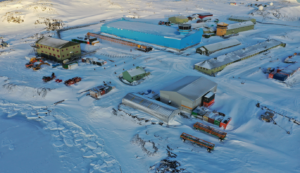Including all types of emissions shortens timeline to reach 1.5°C
New research reveals the world may have less time to reach Paris Agreement temperature targets and have a significantly smaller carbon budget than first thought.
Scientists from the University of Washington investigated how much warming is already guaranteed by past emissions.
While most studies into this topic measure carbon dioxide, these researchers also included other kinds of emissions including methane, nitrogen oxide and aerosols, like sulfur or soot.
They found that under moderate scenarios the planet has a two-thirds chance of exceeding 1.5°C by 2029, even if all emissions ceased on that date.
Additionally, if moderate emissions continued past that point, by 2057 there’s a two-thirds chance the planet will at least temporarily exceed warming by 2°.

‘It’s important for us to look at how much future global warming can be avoided by our actions and policies, and how much warming is inevitable because of past emissions,’ said lead author Michelle Dvorak, a UW doctoral student in oceanography. ‘I think that hasn’t been clearly disentangled before – how much future warming will occur just based on what we’ve already emitted.’
The authors used a climate model to discover what would happen if all emissions were to suddenly stop in each year rom 2021 to 2080, along eight different emissions pathways.
While it’s not realistic for all emissions to suddenly stop, it helps researchers to establish a lower limit for future warming.
The study was able to see the impact of particulate pollution, like soot, which reflects sunlight and has a slight cooling effect, before settling outside of the atmosphere much quicker than greenhouse gases.
It was found stopping all emissions simultaneously produces a temporary bump of 0.2°C which begins when emissions stop and last for 10 to 20 years.
‘This paper looks at the temporary warming that can’t be avoided, and that’s important if you think about components of the climate system that respond quickly to global temperature changes, including Arctic sea ice, extreme events such as heat waves or floods, and many ecosystems,’ said co-author Kyle Armour, a UW associate professor of atmospheric sciences and of oceanography. ‘Our study found that in all cases, we are committed by past emissions to reaching peak temperatures about five to 10 years before we experience them.’
Photo by Mika Baumeister















